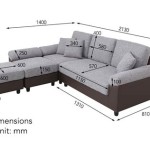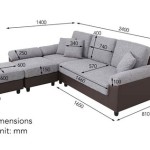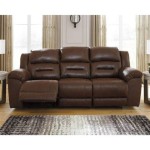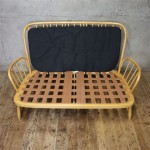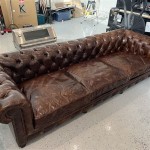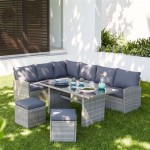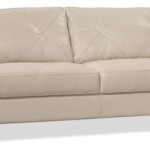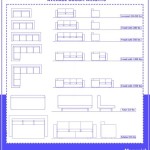Conservatory Sofa Ideas: Creating a Relaxing Oasis
Conservatories offer a unique blend of indoor and outdoor living, acting as a transitional space that allows individuals to enjoy natural light and garden views regardless of the weather. Selecting the appropriate sofa is crucial in transforming a conservatory from a mere extension of the home into a comfortable and inviting living area. The ideal sofa should complement the conservatory’s architectural style, withstand the challenges presented by the environment, and offer both aesthetic appeal and practical functionality. This article will explore various conservatory sofa ideas, considering materials, styles, and arrangements that can help create a relaxing and stylish oasis.
Material Considerations for Conservatory Sofas
The conservatory environment presents specific challenges that must be addressed when choosing sofa materials. Due to the high levels of sunlight and potential temperature fluctuations, durability and resistance to fading, moisture, and mildew are paramount. Certain materials are better suited to withstand these conditions than others. The selection of appropriate materials directly impacts the longevity and visual appeal of the sofa.
Rattan and Wicker: These natural materials are classic choices for conservatories, offering a light and airy aesthetic that complements the garden setting. Rattan is durable and relatively resistant to moisture, while wicker, often made from willow or bamboo, provides a more delicate and intricate appearance. Both rattan and wicker sofas typically require cushions for comfort. The cushion fabrics should be chosen carefully, considering their resistance to fading and staining. Regularly treating the rattan or wicker with a sealant can help prolong its lifespan and protect it from the elements. Consider using light fabrics for cushions in light-colored conservatories to reflect light and keep the space cool.
Aluminum and Metal Frames: Sofas with aluminum or other metal frames offer a contemporary and durable option. These materials are resistant to rust and corrosion, making them suitable for the conservatory environment. Metal frames can be combined with various seating surfaces, such as woven synthetic fibers or cushions. When choosing metal frames, ensure they are powder-coated to provide additional protection against scratches and fading. Light-colored metal frames paired with patterned cushions can create a modern and stylish look. Regularly wiping down the frames with a damp cloth can help maintain their appearance.
Upholstered Sofas with Performance Fabrics: Traditional upholstered sofas can be used in conservatories, provided that they are covered in performance fabrics specifically designed to withstand sunlight, moisture, and staining. These fabrics, often made from synthetic materials like acrylic or olefin, are highly durable and easy to clean. Consider using light-colored or patterned performance fabrics to minimize the appearance of stains and fading. Look for fabrics labeled as UV-resistant or outdoor-friendly. Regular vacuuming and spot cleaning are essential to maintain the appearance and longevity of upholstered sofas in a conservatory setting.
Teak: While primarily used for outdoor furniture, teak's weather resistance makes it a strong choice for conservatories. Teak is a hardwood that naturally produces oils that resist rot, insects, and water damage. Teak sofas often have a simple, elegant design that complements the natural surroundings of a conservatory. The wood will naturally weather to a silvery-gray color over time unless treated with teak oil to maintain its original golden hue. Consider using cushions made from outdoor-rated fabric to enhance comfort and protect the teak from spills and stains. Teak sofas offer a durable and stylish option for those seeking a natural and long-lasting material.
Styles and Arrangements for Conservatory Sofas
Beyond material selection, the style and arrangement of the sofa play a significant role in creating a functional and aesthetically pleasing conservatory space. The sofa's size, shape, and placement should be carefully considered to maximize comfort and optimize the room's layout.
Modular Sofas: Modular sofas offer flexibility and adaptability, making them ideal for conservatories of various sizes and shapes. These sofas consist of individual sections that can be arranged in different configurations to suit the space and needs. A modular sofa can be easily reconfigured to accommodate different seating arrangements, such as a large sectional for entertaining or individual chairs for a more intimate setting. The modular design also allows for easy cleaning and maintenance. Consider using a modular sofa with a neutral-colored frame and interchangeable cushion covers to create a customizable and versatile seating solution.
Loveseats and Smaller Sofas: In smaller conservatories, a loveseat or smaller sofa can provide comfortable seating without overwhelming the space. These compact sofas are ideal for creating a cozy and intimate atmosphere. Pair a loveseat with accent chairs and a coffee table to create a well-balanced seating arrangement. Consider using a loveseat with a high back and armrests for added comfort and support. Choose a loveseat in a light color or with a patterned fabric to add visual interest to the conservatory.
Corner Sofas: Corner sofas are an excellent option for maximizing seating space in a conservatory. These sofas fit snugly into corners, creating a comfortable and inviting focal point. Corner sofas are particularly well-suited for larger conservatories, providing ample seating for family and guests. Consider using a corner sofa with a built-in chaise lounge for added comfort and relaxation. Accessorize the corner sofa with throw pillows and blankets to create a cozy and inviting atmosphere.
Daybeds: For those who enjoy relaxing and reading in their conservatory, a daybed can be a perfect addition. Daybeds offer a comfortable place to lounge and can also serve as an extra sleeping space for guests. Choose a daybed with a sturdy frame and a comfortable mattress. Accessorize the daybed with plenty of pillows and blankets to create a cozy and inviting retreat. Consider placing the daybed near a window to take advantage of natural light and garden views.
Enhancing Comfort and Aesthetics with Accessories
Accessories play a vital role in enhancing the comfort and aesthetic appeal of a conservatory sofa. Throw pillows, blankets, rugs, and coffee tables can all contribute to creating a more inviting and functional space. Carefully chosen accessories can complement the sofa's style and color scheme, adding personality and character to the conservatory.
Throw Pillows and Blankets: Throw pillows and blankets are essential for adding comfort and style to a conservatory sofa. Choose pillows and blankets in a variety of colors, patterns, and textures to create visual interest. Consider using outdoor-friendly pillows and blankets that are resistant to fading and moisture. Arrange the pillows strategically to provide support and enhance the sofa's aesthetic appeal. Drape a blanket over the back of the sofa for added warmth and coziness.
Rugs: A rug can help define the seating area and add warmth and texture to the conservatory floor. Choose a rug that complements the sofa's style and color scheme. Consider using an outdoor rug that is resistant to moisture and staining. Place the rug under the front legs of the sofa to anchor the seating arrangement and create a cohesive look. A natural fiber rug, such as jute or sisal, can add a touch of natural elegance to the conservatory.
Coffee Tables and Side Tables: Coffee tables and side tables provide a convenient surface for placing drinks, books, and other items. Choose tables that complement the sofa's style and size. Consider using a glass-topped coffee table to maximize natural light and create a sense of spaciousness. Side tables can be placed next to the sofa to provide additional surface area. Choose tables with storage options, such as drawers or shelves, to help keep the conservatory organized.
Plants and Greenery: Incorporating plants and greenery into the conservatory can enhance its natural beauty and create a more relaxing atmosphere. Choose plants that thrive in the conservatory environment, such as ferns, orchids, and succulents. Place the plants near the sofa to create a sense of connection with nature. Consider using hanging planters to add vertical interest and maximize space. Plants not only enhance the aesthetic appeal of the conservatory but also improve air quality and create a more soothing environment.
By carefully considering the materials, styles, and accessories, homeowners can select the perfect conservatory sofa to create a relaxing and stylish oasis that can be enjoyed year-round. The conservatory, with its unique blend of indoor and outdoor elements, provides an ideal setting for relaxation and entertainment, and the right sofa is essential for maximizing its potential.

Conservatory Furniture Ideas To Bring The Outdoors In

Conservatory Furniture Ideas To Bring The Outdoors In

Modern Conservatory Furniture Google Search Contemporary

Bermuda Medium Sofa Sunroom Furniture Garden Design Conservatory Interior

5 Innovative Small Conservatory Interior Design Ideas For 2024

What Furniture Looks Good In A Conservatory Network Britannia

Conservatory Furniture Ideas Designs To Elevate Your Garden Room

5 Conservatory Design Ideas From Traditional To Contemporary

31 Traditional Ideas Conservatory Furniture Cane

How To Furnish A Conservatory Or Garden Room Holloways
Related Posts

